
Home - Search - Browse - Alphabetic Index: 0- 1- 2- 3- 4- 5- 6- 7- 8- 9
A- B- C- D- E- F- G- H- I- J- K- L- M- N- O- P- Q- R- S- T- U- V- W- X- Y- Z
Space Base
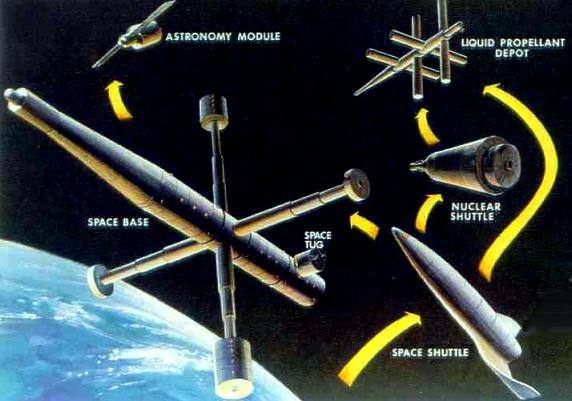
Space Base
Credit: NASA
Status: Study 1970. Gross mass: 1,000,000 kg (2,200,000 lb). Span: 10.00 m (32.00 ft).
The original core Station Module was to be used in the Base build-up several years later or was to be used as a prototype of one of the Space Base modules. Space Base would serve as a major international facility for research, applications and for the support of other space operations such as servicing unmanned satellites. The crew would be large enough to include specialists of many kinds and to minimize even more the need for astronaut-type training. The Space Base would provide nearly equal zero and artificial gravity volumes and would be configured with permanent dedicated laboratories and observatories in addition to general purpose facilities.
Both Phase B teams developed very similar concepts. Living and operation functions were centered in the rotating arms while research laboratories and observatories and applications facilities were found primarily in zero gravity hub modules or in hub sections rotating to local vertical. The most significant difference in the concepts was that one had counter-rotating artificial gravity arms while the other had a single rotating arm. The North American Rockwell single rotation arm concept had a relatively high angular momentum which provided a very stable platform. The McDonnell Douglas counter-rotating arm had zero gyroscopic stability and, therefore, would require little torque to change its attitude. No conclusive arguments favored one approach over the other.
Both concepts employed dual 50 kW nuclear reactor Brayton power generating systems deployed in a "Y" arrangement on the end of the non-rotating hub. This configuration would minimize radiation effects and would simplify maintenance and replacement operations.
The 50-man space base would have used nine of the basic 12-man space station modules. A much larger 400-man 'space hotel' could eventually be assembled from 18 modules. The space base would have been launched around 1980 to support large scale manned space activities in low Earth orbit. Smaller space stations would have been launched into geostationary and lunar orbit during the mid-/late 1970s to support manned lunar exploration. The smaller 6-crew space station module would also have housed Mars-bound astronauts in 1982-86.
An alternate space base design would have moved most of the equipment from the non-rotating weightless core segment to the rotating arms, where artificial gravity would be generated.
Crew Size: 50. Habitable Volume: 7,000.00 m3. Electric System: 50.00 average kW.
Family: Space station, Space station orbit, USA - Space Stations. People: McDonnell. Country: USA. Launch Vehicles: Saturn V. Agency: NASA, North American. Bibliography: 481.
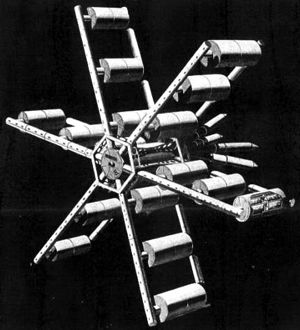 | Space Base Space Hotel for 400 inhabitants, 1970 Credit: NASA via Marcus Lindroos |
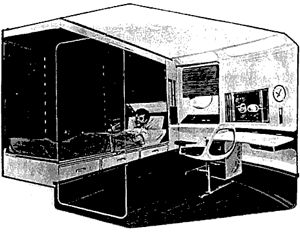 | PMM Quarters Planetary Mission Module Credit: NASA |
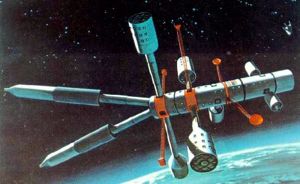 | Space Base - McAir Space Base for 50 inhabitants, McDonnell Douglas, 1970 Credit: NASA via Marcus Lindroos |
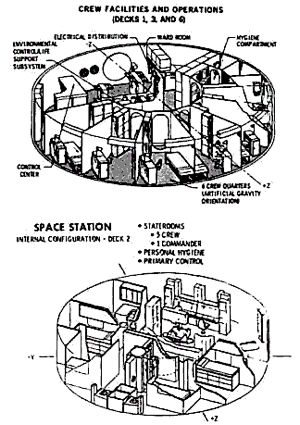 | Station Cutaways Credit: NASA |
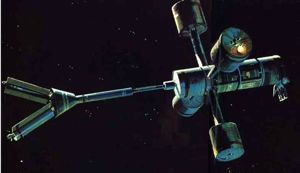 | Space Base -Rockwell Space Base for 50 inhabitants, Rockwell International, 1970 Credit: NASA via Marcus Lindroos |
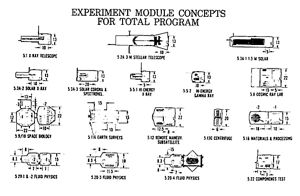 | Station Modules 1969 Credit: NASA |
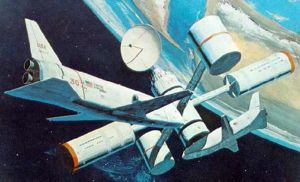 | Space Base - NAR Space Base, North American Rockwell Credit: NASA via Marcus Lindroos |
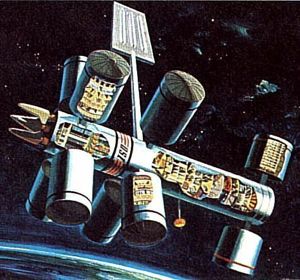 | Space Base Credit: NASA |
1970 During the Year - .
- NASA Space Station / Space Base Studies - .
Nation: USA.
Spacecraft: Space Base,
Space Station.
Growth of the 12-man Saturn V-launched Space Station into a 50 man Space Base was a required capability in the Phase B NASA Space Station studies of 1969-1970. The original core Station Module was to be used in the Base build-up several years later or was to be used as a prototype of one of the Space Base modules. Space Base would serve as a major international facility for research, applications and for the support of other space operations such as servicing unmanned satellites.
Back to top of page
Home - Search - Browse - Alphabetic Index: 0- 1- 2- 3- 4- 5- 6- 7- 8- 9
A- B- C- D- E- F- G- H- I- J- K- L- M- N- O- P- Q- R- S- T- U- V- W- X- Y- Z
© 1997-2019 Mark Wade - Contact
© / Conditions for Use